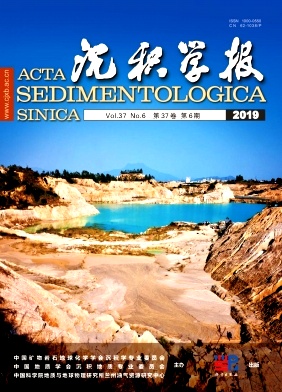Sedimentary Types and Genetic Mechanism of the Space-time Evolution of Sublacustrine Fans of the Paleogene in Lower Ed2 Formation,Northern Sub-sag of the Liaozhong Sag
doi: 10.14027/j.issn.1000-0550.2019.007
- Received Date: 2018-08-16
- Rev Recd Date: 2019-01-10
- Publish Date: 2019-12-10
-
Key words:
- Liaozhong Sag /
- sublacustrine fan /
- sedimentary type /
- space-time evolution /
- gravity flow
Abstract: Fourteen sublacustrine fans are located in the northern sub-sag of the Liaozhong Sag in the lower Ed2 Formation. A systematic study of their sedimentary characteristics,genesis and space time evolution,combined with gravity flow sedimentation theory and the degree of development of water channels and the characteristics of the gravity flow fluid indicated three types of sedimentation:non-channelized sandy-debris flow(SDF) sublacustrine fans, non-channelized turbidite-current(TC) sublacustrine fans,and channelized fans. The SDF and TC fans have no evident channel;the SDF is rich in sand,and the TC fan is rich in mud. The sand in the channelized fan is mainly confined to the channel,and the mud is outside the channel. The main factors that determined the formation of the different fan types depends on(a) whether the source is rich in sand,and(b) the scale of the slope break belt. The nonchannelized fans were formed when the sand content exceeded 30% of the sand content of the channelized fans. Both SDF and TC fans were found when the scale of the slope break was relatively large and the transport distance was greatest. Only SDF fans were formed when the slope break was small. Sand-rich source material(non-viscous and easily mixed with water in slump tests) did not readily form channels. Mud-rich source material(viscous and not readily mixed with water in slump tests) formed obvious channels.
| Citation: | LIU YiMeng, ZHANG Li, HUANG XiaoBo, ZHENG JingGui, XU Wei. Sedimentary Types and Genetic Mechanism of the Space-time Evolution of Sublacustrine Fans of the Paleogene in Lower Ed2 Formation,Northern Sub-sag of the Liaozhong Sag[J]. Acta Sedimentologica Sinica, 2019, 37(6): 1280-1295. doi: 10.14027/j.issn.1000-0550.2019.007 |






 DownLoad:
DownLoad: